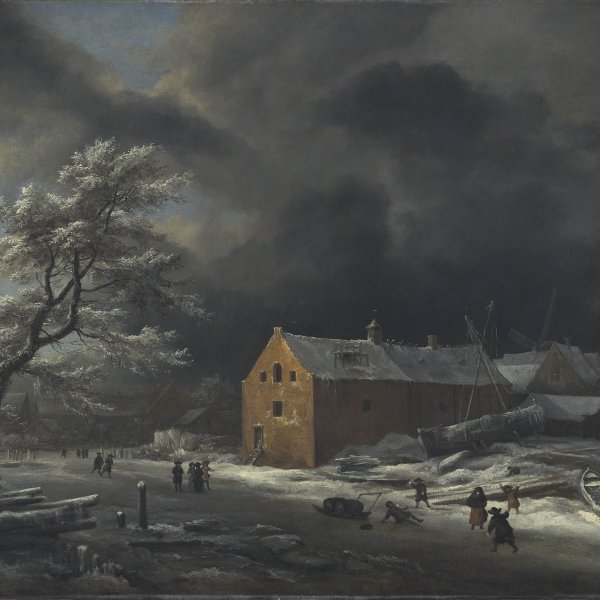Jacob Isaacksz. van Ruisdael and Collaborators (?)
Haarlem, 1628/29-Amsterdam (?), 1682
Jacob van Ruisdael was a painter, draughtsman and printmaker who trained in the family workshop with his father Isaack (a painter and framemaker), and with his uncle, the landscape painter Salomon van Ruysdael. His first works are dated 1646 before the young artist had even reached twenty. Two years later, in 1648, Ruisdael's name is registered in the guild of painters of Saint Luke in Haarlem. Around 1650 he travelled in the company of another painter, Claes Berchem, to Westphalia. During this visit he saw the castle at Bentheim, which would become a motif that inspired a series of paintings in which the building is seen from different viewpoints. During the same trip he also visited the castle at Steinfurt which he depicted in a number of canvases. Around 1656 Ruisdael is documented in Amsterdam where he obtained citizenship three years later, and it was during this period that the artist's works became increasingly complex. Winter landscapes, scenes with waterfalls, watermills and seascapes were all subjects depicted by Ruisdael. In some of these landscapes it has been suggested that he used a symbolism whose key lies in the meaning of the waterfalls and watermills, among other elements. The Jewish Cemetery in the Detroit Institute of Arts, Bentheim Castle formerly in the Beit Collection, now in the National Gallery of Ireland, or the numerous views of cities such as Haarlem, are among his most important paintings.
Ruisdael, in contrast to his father and uncle, changed the "y" in his surname for an "i", a formula which he used throughout his life when signing his canvases.
Ruisdael, in contrast to his father and uncle, changed the "y" in his surname for an "i", a formula which he used throughout his life when signing his canvases.




